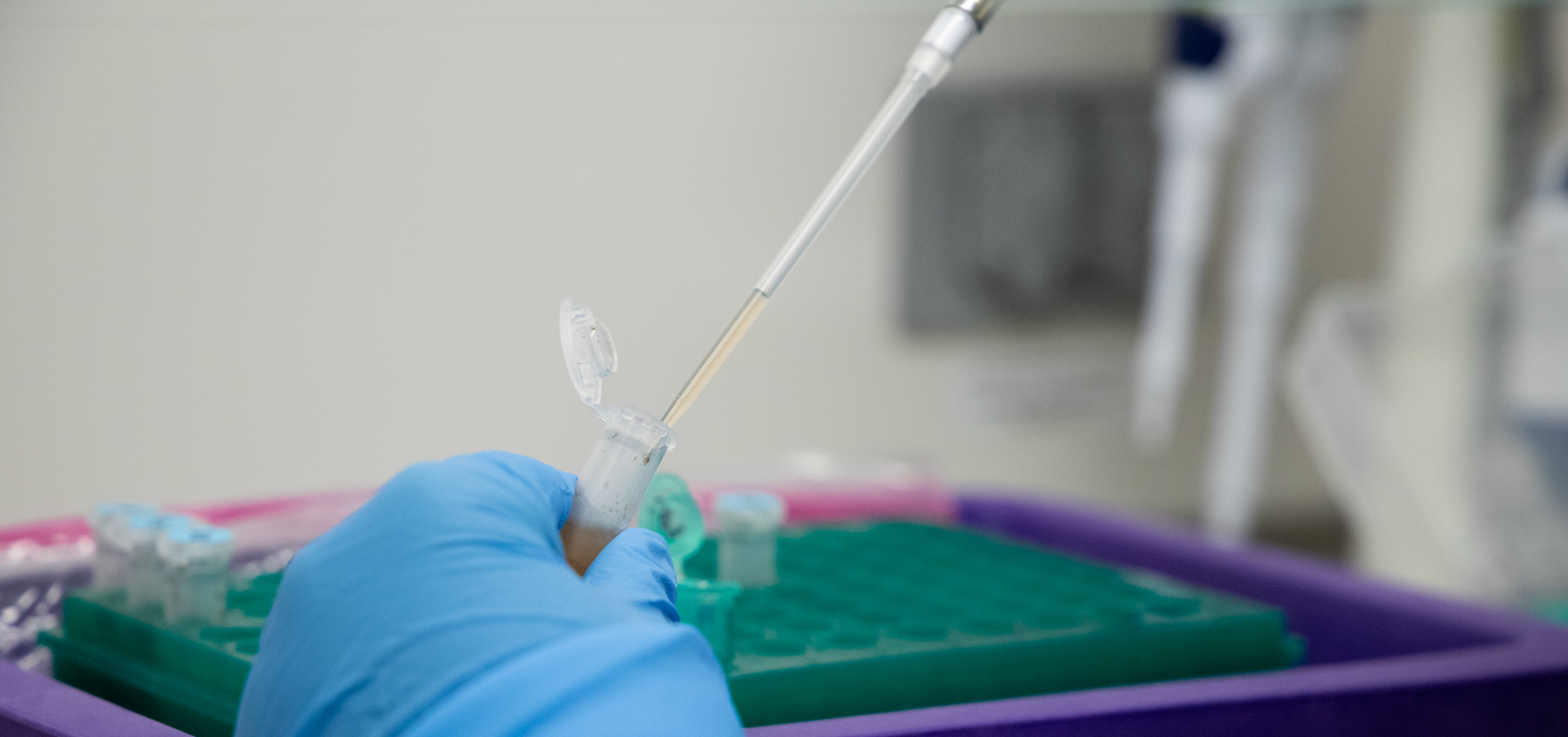Mosquitoes are prepared for PCR testing to monitor for three viruses potentially dangerous to both animals and humans: West Nile, St. Louis encephalitis and western equine encephalitis virus.
Molecular Diagnostics is one of the sections within the Oregon Veterinary Diagnostic Laboratory at Oregon State University. We sat down with the section team to learn more about what they do and who they are.
What's your primary focus?
In Molecular Diagnostics we’re focused on the rapid detection of pathogens that may be causing disease in individual animals or present a risk to the health of a herd/flock, wildlife, individual pet or human animal owner. To detect these pathogens, we use a process called the polymerase chain reaction (PCR) — enabling the rapid and sensitive detection of an organism by amplification of a small portion of DNA specific to that organism.
The process works like this: We first extract the DNA and/or RNA (nucleic acids) from the sample submitted. Then we add a small sample of the nucleic acids to a solution that contains small DNA fragments, called primers, designed to recognize specific DNA patterns in the genome of the pathogen we are testing for. This enables an enzyme called DNA polymerase to bind and make copies of the DNA segment. As the DNA segment is amplified in this manner, another DNA fragment – designed to bind to a specific DNA sequence present in the amplified segment and, upon binding, release a fluorescent molecular – is then detected by a sensitive camera in the instrument.
This seemingly simple, and elegant way of detecting specific organisms earned its inventor, Kary B. Mullins, the Nobel Prize in Chemistry in 1993. Use of PCR in diagnostics is widespread due to its high sensitivity and specificity and relatively rapid results. Our team uses these types of tests for very high consequence diseases such as highly pathogenic avian influenza H5N1 (HPAI) and many other pathogens that can cause highly contagious or serious diseases in many different animal species, including humans.
What is your impact?
Our laboratory is the only laboratory in the State of Oregon approved to test for high consequence diseases regulated by the USDA, such as HPAI, and several diseases that are not currently present in the United States (Foreign Animal Diseases) such as African Swine Fever, Classical Swine Fever and Foot and Mouth Disease. We work closely with state and federal veterinarians to test any suspect animals, providing early detection so infected animals can be isolated, preventing further spread of the disease. Detecting pathogens early is critical to stopping the spread of disease to protects all animals (livestock, wildlife and pets) and animal owners across the state.
As an example, we are currently testing milk samples from all Oregon dairy farms for HPAI as part of a surveillance program to detect HPAI immediately if it becomes present in dairy herds. We have not detected HPAI in any dairies in Oregon to date.
What do you enjoy most about your work?
Emma Hodge, Microbiologist
I enjoy the teamwork we have in our lab, as well as the impact we're able to have on the community. I've always strived to position myself in a career that has meaning, and working here has helped me feel fulfilled in that regard.
Donna Mulrooney, Molecular Diagnostics Supervisor and OVDL Quality Assurance Manager
I enjoy the daily variation in the types of samples received and the tests we are requested to perform. We are always learning something new. It gives me satisfaction to know we are supporting Oregon agriculture and protecting our food supply in addition to protecting wildlife, pets and Oregonians from emerging disease threats. I am proud to say we are the only lab in Oregon approved to perform this testing, and we have a fantastic team!
Justin Sanders, Molecular Diagnostics Section Head
I enjoy developing new tests and interacting with clients and stakeholders. However, none of this would be possible without the dedicated, caring and knowledgeable staff, and I most enjoy knowing that their work is helping to protect the health of our community.
Are there new tests being offered by your section?
We are working to add additional PCR tests to fill gaps in our test offerings, with an emphasis on pathogens that can cause serious disease in animals and are capable of infecting humans. We will continue to add PCR test options for detection of emerging pathogens that are of concern across all animal species. Please reach out to vet.diagnostic@oregonstate.edu if there is a specific PCR test you would like to see offered. We will provide notification on our website and in this newsletter as new tests become available.
What's the most adventurous thing you've done?
Emma Hodge
Skydiving!
Justin Sanders
Taking my daughter to the Tiputini Biodiversity Station in Ecuador to look for parasites in fish with friends.
Donna Mulrooney
Reeling in an 11-foot sturgeon while trying not to get pulled overboard.










